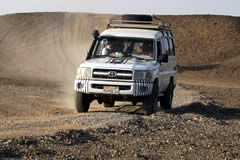What Has Improved The Maneuverability Of A Vehicle - Vol.292
When the car was first created, it was not very maneuverable. Sure, the first Ford could turn left and right, but quick response turns, weaving, and hairpin maneuvers were not on the menu. As vehicles have advanced through the years, so has their handling. While all cars sold today have at the very least good handling and maneuverability, there are specific vehicle types which truly excel at it. Certain factors contribute to how well a vehicle handles and drives, regardless of the vehicle being a car, truck, or SUV.

How Vehicle Size Affects Maneuverability
- In general, the smaller the car the more maneuverable it is. Cars and trucks that are lighter, have less weight to move, and therefore respond more quickly. Buyers should be careful to not purchase a vehicle that is too small, however, as the tiniest vehicles often have weak engines.
- Vehicles that are shorter, or lower to the ground in overall height have improved maneuverability. While a light truck will handle better than a heavy truck, the height of the vehicle changes the automobile's center of gravity. The same can be said for SUVs and vans. This is why rolling is a danger in higher profile vehicles.
- Cars that have not been modified to sit lower on the ground have better maneuverability than those who have been "dropped". When a vehicle is lowered, lessening the ground clearance between the frame and the road, they often perform better in racing and track situations, yet their maneuverability does not improve. In addition, decreasing this ground clearance can cause issues when the driver needs to traverse rough roads. In this sense, a vehicle that is built for "off-road" action is more maneuverable than a street car that has been lowered with a body kit.
How Wheel Drive Affects Maneuverability
- Vehicles with Front Wheel Drive (FWD) are some of the most common. While Four Wheel Drive vehicles are known as the easiest to handle, they are not built for off-road or extreme situations. Drivers may believe that a Four Wheel Drive vehicle handles better than the other options, but these drive types tend to have issues with tire squealing and slipping around corners.
- Rear Wheel Drive (RWD) vehicles are common among foreign imports, SUVs, and sports cars. A vehicle with Rear Wheel Drive will have superior acceleration to a FWD vehicle. The improved acceleration offers additional maneuverability over the FWD models. Drivers should be aware that Rear Wheel Drive vehicles require patience and practice. This wheel drive type is harder to control if you are a novice driver. For experienced drivers, the handling and maneuverability will be far greater.
- Vehicles with an All Wheel Drive (AWD) system are the most uncommon. All Wheel Drive vehicles are the easiest to handle, as they are built to contend with many different terrain and road types. All Wheel Drive vehicles are also far easier to maneuver over their FWD or RWD counterparts. As a vehicle with All Wheel Drive has the capacity to utilize all four tires, placing more power onto the road at once, these vehicles are often the first choice for tactical drivers because of their added maneuverability.
When choosing a vehicle for its improved maneuverability, each driver must assess their driving conditions and individual needs. A person who will commute a short distance on city streets will require a different maneuverability than someone who travels the open roads over long distances. Once you acknowledge what your specific driving conditions entail, you will then have an easier time choosing the correct vehicle size and wheel drive, ensuring that you have the best handling and maneuverability possible.